Wood plays a fundamental role as a primary resource in various industries, from construction to furniture manufacturing. However, with the increasing demand for wood products, issues such as illegal logging and deforestation have become urgent challenges. With hundreds of available wood species and varying wood qualities from hardwood to softwood, the timber identification guide between woods has become more difficult than ever. Unless you are an expert with profound knowledge of all wood types. To address these challenges, K-TIMBER, an expert with over 20 years of experience in the timber industry, will guide you through 6 easy ways to identify wood right in the article below.

Table of Contents
Why you may need to Identify Timber?
As mentioned, the fact is that there are hundreds of commercial wood species being used and sold in the market, and timber identification between them is not easy. Because among hundreds of wood species, there are many with similar appearances. Even with differences in color, shape, and other characteristics, identifying between wood types can only be done by those with specialized knowledge of the specific properties of each wood type.
Therefore, determining the type of wood is extremely important for each specific project. Each wood type has its own characteristics, and choosing the appropriate wood type will depend on the requirements and purposes of the project.
With the goal of helping people easily recognize and identify wood types, we have created this detailed guide to provide you with accurate and effective methods and techniques for wood identification. Let’s continue exploring with K-TIMBER in the section below.
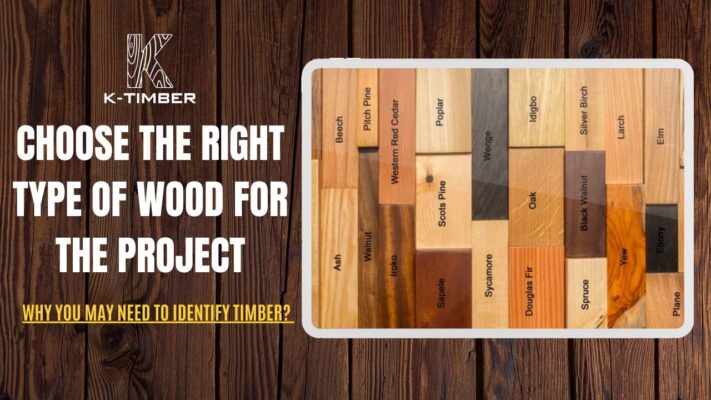
6 Easy Ways to Identify Wood
Identifying which type of wood is quite challenging, but you can still discern this difference by examining various wood characteristics, such as outward appearance, color, durability, grain pattern, weight, and origin.
Identifying Wood by Color and Grain Pattern
In reality, no two pieces of wood will ever be exactly alike, especially when it comes to color and grain pattern. Although there may be close resemblances, the color and grain pattern of each wood species bring unique characteristics that cannot be mistaken.
To identify wood by color, you need to ensure the wood has not been stained or painted and identify the wood by its natural color. For example, softwood typically has a lighter color (though not always). You can then identify a specific softwood based on its grain pattern, hardness, and other unique characteristics. In contrast, hardwood tends to have a darker color. For instance, oak wood usually features a characteristic deep brown color with prominent grain patterns, while maple wood can have a light white or pale yellow color and may exhibit smooth or irregular grain patterns. These subtle differences in color and grain pattern provide important clues for identifying wood and can aid in accurate classification during the wood identification process.
However, some types of wood tend to darken over time. Therefore, the best way to identify wood by color is to sand a corner of the wood piece to determine it accurately.
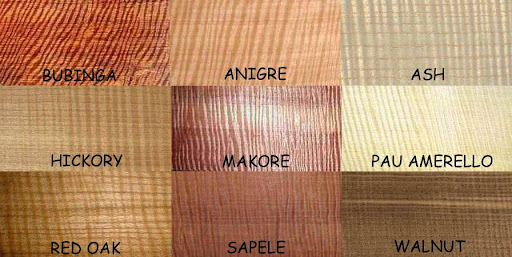
Timber Identification Based on How Solid It Is
To accurately determine which type of wood it is, K-TIMBER advises using solid wood. This is because solid wood typically has greater durability and strength compared to engineered wood (also known as composite wood). Therefore, first, you need to carefully examine whether it is solid wood or not. You can consider factors such as hardness, grain pattern, or growth rings.
The end grain of solid wood usually differs significantly from that of engineered wood, and there may even be no visible end grain at all. The surface of a freshly cut solid wood piece will clearly display growth rings. If a piece of wood has been veneered, its surface may exhibit repeated patterns, which is a common way to identify veneer.
Once you are sure it is solid wood, you can try to determine its hardness based on the Janka hardness test. This is a commonly used method to measure the hardness of wood.
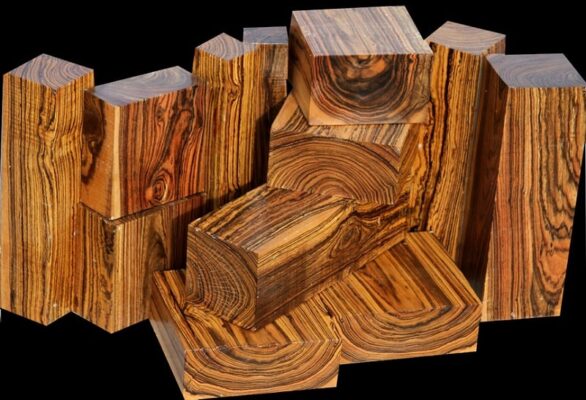
Considering the Weight and Hardness of Wood
Typically, solid wood will often be harder and heavier than engineered wood. However, not all hard wood species have the same weight and hardness. Therefore, to distinguish them, we use the Janka rating or Janka scale to determine hardness when the wood has been split. Each species will have a different Janka rating, indicating its hardness level.
Density and hardness are closely related, so heavy wood is likely to be very hard as well. You can weigh a piece of wood to determine its average dry weight. This is also a common method used by many carpenters when assessing wood hardness. Or if the wood is a finished product that you cannot accurately weigh, you can test its hardness by chiseling it in an inconspicuous area.
Another method you can apply is the “fingernail test” as a rough hardness indicator. Find a sharp edge of the wood and press your fingernail against it as hard as you can and see if it creates a dent on the wood.
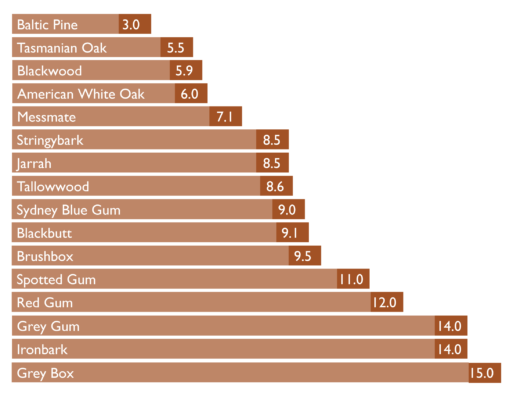
READ MORE: Understanding the Janka Wood Hardness Scale
Identifying Wood by Grain Pattern
Each type of wood has its own distinctive grain pattern, created by the structure and shape of the wood cells. If you are an expert in the field, you can identify wood by its grain pattern, at least for some common wood species with unique grain patterns.
Hardwood typically has a complex or intricate grain pattern with interlocking grain, while softwood often has a smoother grain with parallel fibers. For example, Oak wood typically has a complex grain pattern with thick and deep grain lines, whereas Walnut wood has a smoother and more consistent grain pattern.

Identifying Wood by its Origin
If possible, know as much as possible about the origin of the wood, even the smallest details. Owning a piece of wood item will reveal information about how and where it was produced, thereby identifying its source or place of import locally. There are many historical stories behind ancient wood pieces, and discovering them can be truly fascinating. However, identifying this type of wood may require significant cost and time. The older the wood, the harder it is to identify, especially if it is no longer sold on the market or no longer grown.
Other Ways to Identify Wood
Every type of wood has its own characteristics, color, smell, appearance, and specific applications. If you observe and consider carefully, in reality, no two types of wood are exactly alike. Along with this, different types of wood will also have different applications. Hardwood is often suitable for outdoor applications due to its durability, while softwood is preferred for indoor applications that do not require high load-bearing capacity.
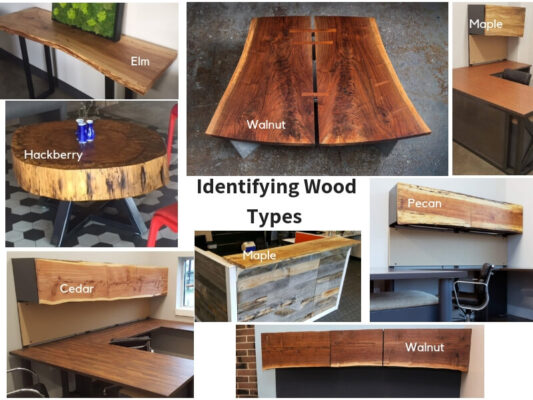
Some types of wood, such as oak, maple, etc., are considered perfect choices for hardwood flooring. Meanwhile, other types of wood like pine, teak, etc., are widely used in furniture production, door making, etc.
And if you cannot yet identify the type of wood or need assistance from experts to choose the appropriate wood for your project, contact K-TIMBER immediately. K-TIMBER is one of the leading manufacturers, processors, and suppliers of quality wood products in Africa. We are always ready to answer any questions from our customers and provide you with a variety of wood types, from hardwood to softwood, with the best quality and most competitive prices. Contact K-TIMBER now for a quotation and direct consultation.




![[K-Timber] Blog Post Boder](https://k-timbers.com/wp-content/uploads/2024/06/K-Timber-Blog-Post-Boder.jpg)
![[K-Timber] Blog Post](https://k-timbers.com/wp-content/uploads/2024/09/Ban-sao-cua-K-Timber-Blog-Post-Boder.png)
![[K-Timber] Blog Post Boder](https://k-timbers.com/wp-content/uploads/2024/06/K-Timber-Blog-Post-Boder-2.jpg)



